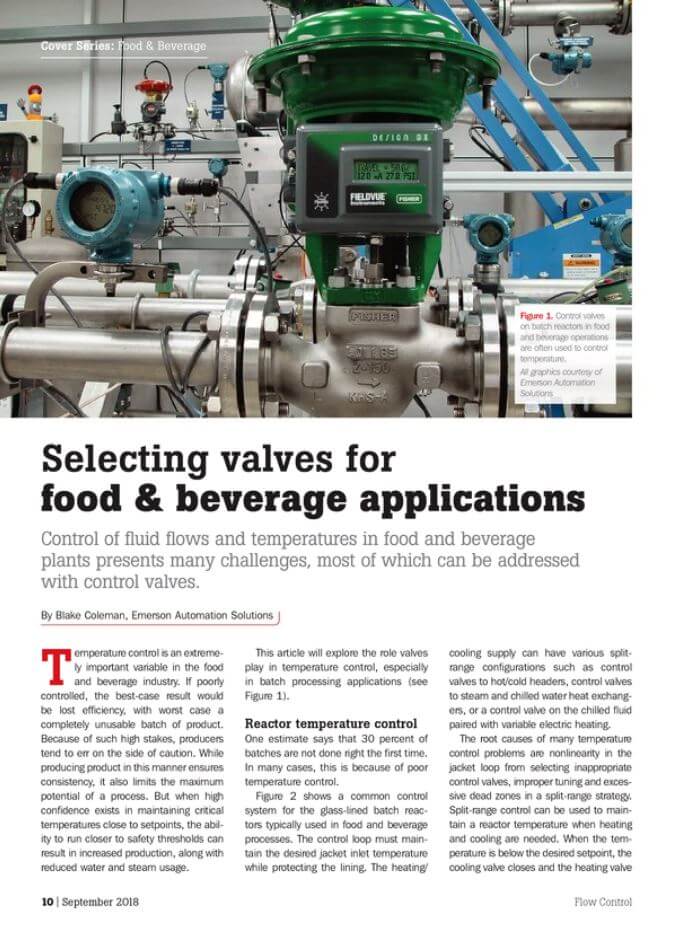Blake opens with what poor control may mean:
…the best-case result would be lost efficiency, with worst case a completely unusable batch of product. Because of such high stakes, producers tend to err on the side of caution.
 He describes the control arrangement in common vessels used—glass-lined batch reactors.
He describes the control arrangement in common vessels used—glass-lined batch reactors.
The control loop must maintain the desired jacket inlet temperature while protecting the lining. The heating/cooling supply can have various split-range configurations such as control valves to hot/cold headers, control valves to steam and chilled water heat exchangers, or a control valve on the chilled fluid paired with variable electric heating.
Three things a control engineer must avoid for effective temperature control include:
…inappropriate control valves, improper tuning and excessive dead zones in a split-range strategy. Split-range control can be used to maintain a reactor temperature when heating and cooling are needed.
Blake describes several cases where food & beverage manufacturers have had problems with their temperature control. Problems uncovered included:
- Poor tuning of the reactor temperature controller
- Poor tuning of the jacket temperature controller
- Excessive dead zone in the jacket split-range logic
- Control valve setup problems
By addressing these problems, one company paid for the project work in 3 months in steam usage along. This return on investment did not include higher quality and greater efficiencies also gained.
It’s important to match the characteristics of the control strategy with the characteristics of the valve. He advises:
Control valves associated with temperature control must be able to quickly get to setpoint, maintain a high level of accuracy during the batch cycle without oscillation and quickly respond to the end of batch setpoint. Having high rangeability is preferable but must be balanced with response. Does one degree of temperature change impact quality? If so, a control valve solution with highly accurate response should be considered. A butterfly valve can provide high rangeability but has a much narrower control range compared to a segmented ball or globe valve.
Read the article for more recommendations including strategies for retort operations, other considerations in valve selection, valve specifications and applicable standards in food & beverage processes, and other key considerations.
Visit the Valves, Actuators & Regulators and the Food & Beverage sections or Emerson.com for more technologies and solutions to help provide safe, efficient and reliable operations. You can also connect and interact with other experts in the Valves, Actuators & Regulators and Food and Beverage groups in the Emerson Exchange 365 community.





